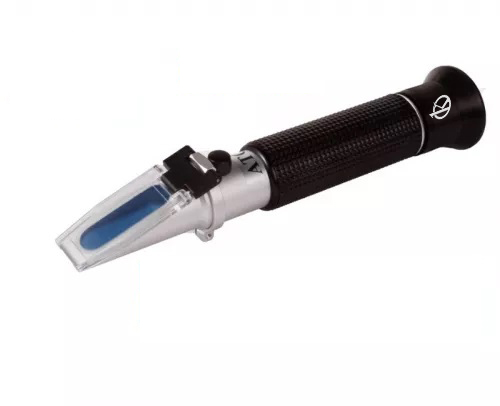Laboratory refractometers have proven to be one of the most indispensable scientific instruments for analytical research. These devices measure the refractive indices of a liquid sample, reducing the margin of error and providing accurate and reliable results.
From a scientific point of view, laboratory refractometers are used for a variety of applications: identification of compounds, monitoring the stability of materials, analysis of impurities and, above all, determination of the concentration and quality of pharmaceutical, food and chemical products.
Scientific applications of laboratory refractometers
First of all, speaking of scientific applications, refractometers are used to identify liquid materials whose typical refractions are known. This is because each liquid has a certain characteristic refractive index that makes them unique and distinguishable. This characteristic is useful for distinguishing different liquid samples and, to do so, the refractometer measures the refractive index of a sample to determine which liquid is being measured. As a result, this widespread practice avoids the consumption of precious time spent on visual identification and labeling of analyzed liquids.
Secondly, laboratory refractometers are used to monitor the stability of liquid materials. This application ensures that liquids remain stable during storage or transport. This is especially true for liquids intended for use in the pharmaceutical or chemical industry, where liquids have to meet the changing quality requirements of the markets. Using the refractometer, the stability of liquids can be observed from changes in refractive indices before and after storage, and the manufacturer can then adjust the formulation accordingly to improve quality.
Scientific functions for improving results using Refractometers
In addition, laboratory refractometers are applied for the analysis of unwanted impurities in liquids. This means that the accuracy of results is substantially improved by reading refractive indices and optical properties to identify the absorbance, transmittance and reflectance of liquids. They are also used to detect and quantify the amount of impurities present in the products, which ultimately helps to ensure the consistent quality and purity of such liquid products.
Finally, laboratory refractometers are widely used to determine the concentration and quality of pharmaceutical, food and chemical products. This is because these devices allow the researcher to measure the refractive index of liquid materials to determine the concentration of the liquid or to verify whether the product meets established standards.
What Kalstein has for you
Refractive index determination has proven to be a reliable method for identifying the content of liquid materials. The high accuracy of laboratory refractometers has made them a useful tool for optimizing the quality of pharmaceutical, food and chemical products, improving stability monitoring and reducing the margin of error in impurity analysis. For these reasons, laboratory refractometers continue to be one of the most essential scientific instruments for analytical research.
Visit our Laboratory line HERE here you will not only find the best refractometers on the market, but also a range of products necessary for the laboratory, most of which have European certification, to ensure the excellence of the YR series that Kalstein has for you, in addition to having the necessary technical support that will accompany you not only at the time of your purchase but whenever you need it. HERE

